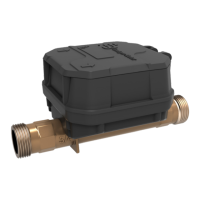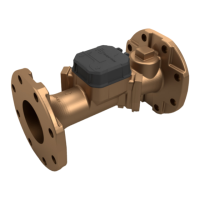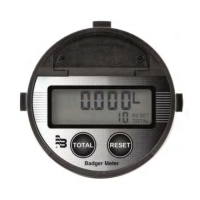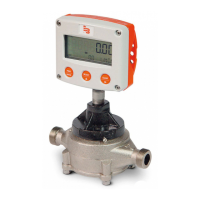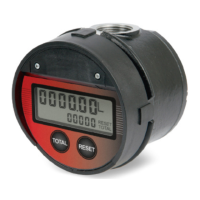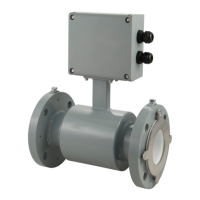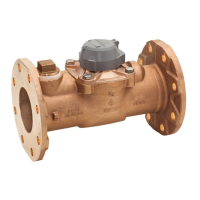Linearization
To increase accuracy, linearize the monitor. The linearization function accepts a maximum of ten points and requires
additional calibration data from the meter being used with the monitor. Typically, calibration information can be obtained
in three, five and ten points from the flow meter’s manufacturer. If linearization is not needed, press RIGHT to advance to
the Modbus parameter. See Modbus on page 22. To complete linearization, press ENTER at the Linear prompt. The monitor
advances to the Lin Pts parameter.
Number of Points
The Lin Pts value displays. If the number of points is set to 0, linearization is disabled. Press ENTER. The most significant digit
of the number of points entry begins to flash. The first number can be a 1 or a 0 only. Press UP to change the first digit. Press
RIGHT to move to the least significant digit.
OTE:N If the number you enter is out of range the, display flashes Limit and refuses the entry.
Press ENTER to advance to the Freq#1 prompt.
OTE:N If the number of linear points is set to 1, the ER-500 monitor assumes that you are entering the maximum frequency
and coefficient. Further, the meter assumes that the implied first point is at a frequency of 0 Hz and a coefficient of 0.
Frequency
At the Freq#1 prompt, press ENTER. The first digit of the first linear point’s frequency input flashes. Press UP to increment
the numerical values and RIGHT to change the position of the number being entered. When the frequency value input is
complete, press ENTER to save and advance to the Coef#1 parameter.
Coefficient
The coefficient is the value applied to the nominal K-factor to correct it to the exact K-factor for that point. The coefficient is
calculated by dividing the average (nominal) K-factor for that point by the actual K-factor for the flow meter.
Linear Coecient =
Actual K-Factor
Nominal K-Factor
At the Coef#1 prompt, press ENTER. The first digit of the coefficient flashes. Press UP to increment the digit, and RIGHT to
move to the next digit. When all digits have been entered, press ENTER to save and advance to the next frequency input.
Continue entering pairs of frequency and coefficient points until all data has been entered. Press ENTER to save and advance
to the Modbus parameter.
OTE:N The frequency values must be entered in ascending order. If a lower frequency value is entered after a higher value
the ER-500 monitor flashes Limit followed by the minimum frequency value acceptable to the display.
Example:
The following is actual data taken from a one inch turbine flow sensor calibrated with water.
Unit Under Test (UUT) Calibration In GPM
Actual
GPM
UUT
Frequency
UUT Actual
K-factor
(Hz x 60)
Nominal K
Linear
Coefficient
Raw Error
Hz Counts/Gallon GPM % Rate
50.02 755.900 906.72 49.72 1.0060 0.59
28.12 426.000 908.96 28.02 1.0035 0.35
15.80 240.500 913.29 15.82 0.9987 -0.13
8.88 135.800 917.57 8.93 0.9941 -0.59
4.95 75.100 910.30 4.94 1.0020 0.20
Nominal K (NK) 912.144 — —
In this example the linear coefficient has already been calculated by the calibration program so all that is required is to enter
five into the Lin Pts parameter and then enter, in order, the five frequency and linear coefficient data pairs.
Programming
DSY-PM-00028-EN-02 Page 21 February 2017
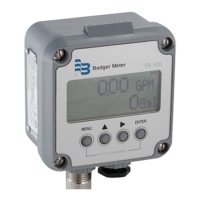
